マウント無しアクロマティック複レンズ、ARコーティング:400~700 nm
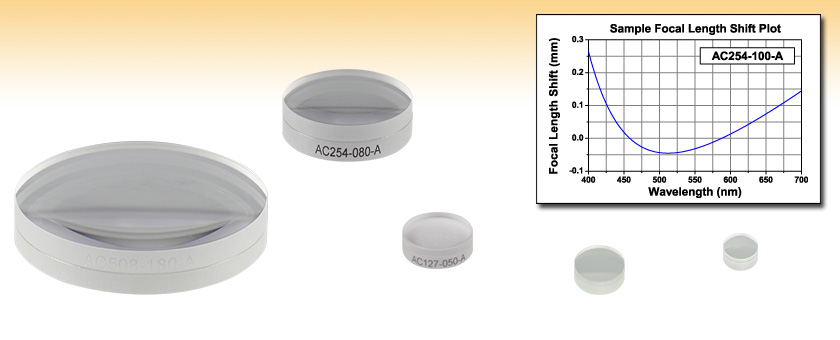
- Achromatic Performance with AR Coating for 400 - 700 nm
- Multi-Element Design Minimizes Spot Size
- Custom Achromatic Optic Available
AC508-180-A
f = 180 mm, Ø2"
AC254-080-A
f = 80 mm, Ø1"
AC127-050-A
f = 50 mm, Ø1/2"
AC080-016-A
f = 16 mm, Ø8 mm
AC060-010-A
f = 10 mm, Ø6 mm

Please Wait
| General Specifications | ||
|---|---|---|
| Design Wavelengths | 486.1 nm, 587.6 nm, and 656.3 nm | |
| AR Coating Range | 400 - 700 nm | |
| Reflectance Over AR Coating Range (0° AOI) | Ravg < 0.5% | |
| Diameters Available | 2 mm, 5 mm, 6 mm, 6.35 mm, 8 mm, 1/2", 1", 30 mm, and 2" | |
| Diameter Tolerance | +0.0 / -0.1 mma | |
| Focal Length Tolerance | ±1%b | |
| Surface Quality | 40-20 Scratch-Digc | |
| Spherical Surface Powerd,e | 3λ/2 | |
| Spherical Surface Irregularity (Peak to Valley)e | λ/4 | |
| Centration | < 3 arcminf | |
| Clear Aperture | > 90% of Diameter | |
| Damage Thresholdg | Pulsed | 0.5 J/cm2 (532 nm, 10 ns Pulse, 10 Hz, Ø0.566 mm) |
| CWh | 300 W/cm (532 nm, Ø1.000 mm) | |
| Operating Temperature | -40 °C to 85 °C | |
| Achromatic Doublet Selection Guide | |
|---|---|
| Unmounted Lenses | Mounted Lenses |
| Visible (400 - 700 nm) | Visible (400 - 700 nm) |
| Extended Visible (400 - 1100 nm) | Extended Visible (400 - 1100 nm) |
| Near IR (650 - 1050 nm) | Near IR (650 - 1050 nm) |
| IR (1050 - 1700 nm) | IR (1050 - 1700 nm) |
| Achromatic Doublet Kits | |
| 下の型番横の赤いアイコン(資料)をクリックすると、各製品のZemaxファイルをダウンロードいただけます。また、こちらからは当社の全てのZemaxファイルの一括ダウンロードが可能です。 |
特長
- 400~700 nm対応のARコーティング付き
- 正の複レンズサイズ Ø2 mm~Ø50.8 mm(Ø2インチ)
- 負の複レンズサイズ Ø12.7 mm(Ø1/2インチ)~Ø50.8 mm(Ø2インチ)
- 4 mm~1000 mmの焦点距離(正の複レンズ)
- -20 mm~-100 mmの焦点距離(負の複レンズ)
- カスタム仕様もご提供可能
当社の接合済みアクロマティック複レンズは、可視域で優れた性能が発揮できるように最適化された製品です。 この製品の設計波長は、ヘリウムのd線(587.6 nm、黄色)、水素のF線(486.1 nm、青/緑)および水素のC線(656.3 nm、赤)です。これらの波長は可視光スペクトルを代表しており、材質のアッベ数Vdの定義にも用いられています。
単レンズと比較したアクロマティック複レンズの利点に関しては「用途」タブを、アクロマティックレンズの測定例につきましては「性能」タブをご参照ください。Zemax®ファイルをご参照になりたい場合は、下記の個別製品の型番の隣にある赤いアイコンをクリックしてください。
収差を最小限にするためには、曲率半径の小さい面(曲面)をコリメート光側に向けてください。Ø12.7 mm(Ø1/2インチ)以上の複レンズについてはレンズに刻まれた型番が正しく読める方向にレンズを置いた場合、平らな面が下になります。詳しい内容については、下記の表中のReference Drawingのリンク先の図をご参照ください。
推奨のレンズマウントにつきましては、下記をご参照いただくか、当社の固定式レンズマウント、自動芯出しレンズマウント、調整式レンズマウントの製品ページをご参照いただき、マウントをお選びいただくことも可能です。 なおレンズマウントをお選びになるときは、レンズ仕様を調べてマウントがレンズの直径とエッジ部の厚さ寸法に対応することを確認してください。 これらの可視域用アクロマティック複レンズはマウント付きでご提供しています。< 410 nmの波長における用途では、240 nmまで良好な性能を示すUV域エアスペース型アクロマティック複レンズをご検討ください。
下の仕様値の表において、曲率が正となるのは、Reference Drawingで図示されているように、光が入る方向に対してレンズの面が凸面型である場合で、曲率が負となるのは、光が入る方向に対してレンズの面が凹型の場合です。 正および負のレンズとも無限共役比となっています(拡散光源をレンズの平坦な面から1焦点距離分離して置くと、曲面からの光がコリメートされます)。
カスタムアクロマティックレンズ
当社では、アクロマティックレンズの特注品に対応しております。特注品は、組み込み用途(OEM用途)向けでも単発少ロットでもご注文が可能です。ご希望のサイズ、焦点距離、基板材料、接着剤、コーティングの種類をお選びいただけます。また、当社標準品を上回る仕様にも対応させていただきます。詳細につきましては、当社までお問い合わせください。
アクロマティック複レンズに関する詳細情報は、各製品の型番横にある赤いアイコンをクリックしてZemax®ファイルをご参照ください。下はZemax®ファイルを利用した測定例を示しています。
焦点シフト vs. 波長
当社のアクロマティック複レンズは、広帯域にわたってほぼ一定の焦点距離が出るように最適化されています。これはレンズの色収差を最小限に抑える、複数の素子を用いた設計により実現しています。複レンズの1枚目のポジティブ素子の分散は、2枚目のネガティブ素子により補正されるため、球面単レンズや非球面レンズよりも幅広い帯域で性能を発揮します。下のグラフは、焦点距離400 mm、Ø25.4 mmの可視域用アクロマティック複レンズAC254-400-Aの近軸焦点シフトの波長依存特性を示しています。
波面エラーとスポットサイズ
当社の球面複レンズ(ダブレットレンズ)は球面収差、色収差、コマ収差など様々な収差を補正します。この補正の理論的レベルを数値化する方法の1つに、波面誤差のプロットと光線追跡法を用いたスポットダイヤグラムの作成があります。図2では、 AC254-125-Cの像面における波面のプロットで収差補正に関する情報を示しています。波面誤差は理論的に波長の3/100のオーダになっています。これはレンズの中心を通過する光線と開口部の最外部を通る光線の光路差(OPD)が非常に小さいことを意味します。
図3では、AC254-250-Cの像面におけるスポットサイズの光線追跡結果が示されています。この近赤外域用アクロマティック複レンズでは、設計波長(706.5 nm、855 nm、1015 nm)がレンズを通して追跡され、それぞれ違う色で示されています。光線の切片の分布を取り囲む円は、エアリーディスクの直径を表しています。スポットがエアリーディスク内にある場合は、レンズの性能は、通常回折限界であると見なされます。スポットサイズは、幾何学的光線追跡法を用いて描画されるので、エアリーディスクよりもずっと小さなスポットは、回折により制限されます。
変調伝達関数(MTF)について
MTF画像品質はレンズの重要な特性です。画質の測定は、コントラストを用いる方法が一般的に使われており、MTFをプロットすることで、画質を理論的かつ実験的な数値として表します。レンズのMTFは、様々な解像度で物体を像に変換するコントラスト能力を示します。一般には、様々な間隔の黒線と白線からなる解像度ターゲットを結像し、コントラストを測定します。100 %のコントラストでは、明確な黒線と白線が見られます。コントラストが低下するにつれ、線の区切りがぼやけてきます。MTFのプロットは、このようなラインのコントラスト比で示されます。線の間隔は、通常、本/mmで表記されます。
Zemax®で計算されるMTF曲線は、通常は複数の波長ごとに得られる値の加重平均値を示しており、多色MTF曲線(Polychromatic MTF Curve)として知られています。短い波長と長い波長とでは解像限界が異なります。したがってそれぞれのMTF曲線も異なるため、計算に含まれる波長により異なる多色MTF曲線が生成される場合があります。
上図は当社のØ25.4 mm、f=200 mm近赤外域用アクロマティック複レンズのMTFの理論値を示しています。約20本/mmの場合の空間周波数で、コントラストが83%となっていることがわかります。このことは、線間隔0.05 mmではコントラストが83%であることを示します。MTFの理論値は、光学素子が完全に設計通りに作られた場合の性能を示すものです。現実では、ほとんどの光学素子が製造過程における誤差のために理論値通りにはなりません。
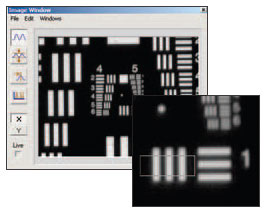
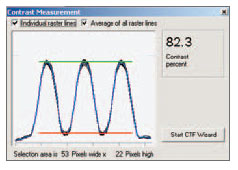
左右のスクリーンキャプチャ像はレゾリューションチャートUSAF 1951を用いて測定した結果です。
この場合、コントラストは82.3 %となりました。
アクロマティック複レンズは、単レンズよりも格段に優れた光学性能を持っています。また、広帯域および軸外では非球面レンズよりも高い性能を示します。要求が厳しいイメージング用途、もしくはレーザ光の操作が必要な用途には、こちらの複レンズをご検討ください。
集光性能
下の図は、平凸単レンズで633 nmのレーザービームを集光した場合とアクロマティック複レンズで同じレーザービームを集光した場合を示しています。複レンズのスポット(最小錯乱円)は単レンズのスポットサイズよりも4.2倍も小さくなっています。
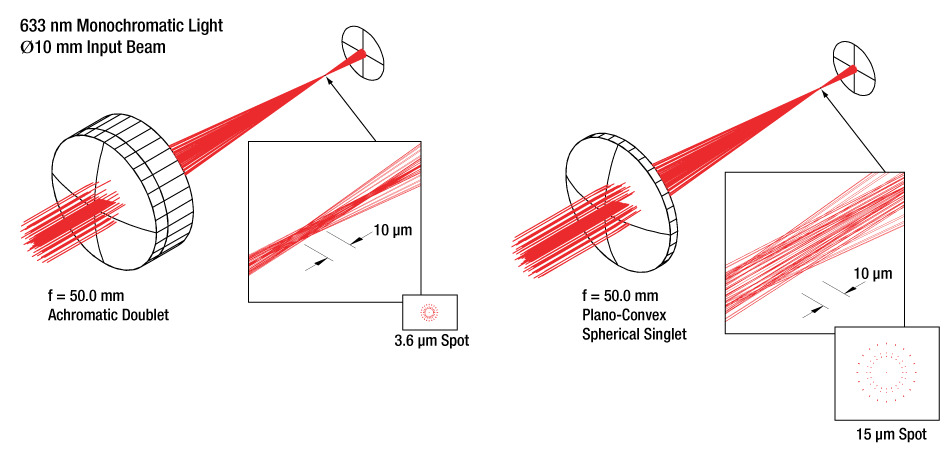
オフセットした光束での性能
下の図は、焦点距離50.0 mmの平凸レンズとアクロマティック複レンズを比較した図です。どちらのレンズの口径もØ25.4 mmで、Ø3 mmの平行な2本のビームを、それぞれ光軸および光軸から8.0 mm離れた位置に入射しています。アクロマティック複レンズでは縦方向および横方向とも、集光位置のずれは大幅に小さくなっていることが分かります。
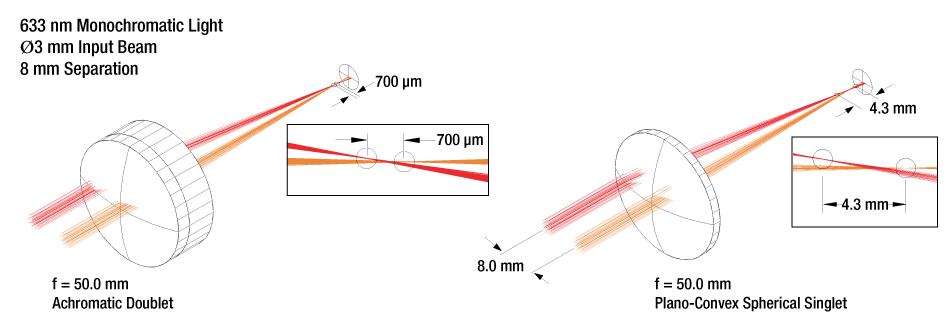
広帯域の波長にわたるほぼ一定の焦点距離
単レンズに白色光源を使う場合、焦点および最小錯乱円は、色収差によりぼやけます。色収差は、波長によって屈折率が異なることから生じます。アクロマティック複レンズでは、これらの収差を打ち消し合う屈折率の異なるレンズ2枚を使うことによって、収差補正しています。
下の図は、アクロマティック複レンズと平凸単レンズを透過する異なる波長光が焦点距離に与える影響を示しています。この図から、白色光の最小錯乱円がアクロマティック複レンズを使うことによって小さくなっていることがわかります。
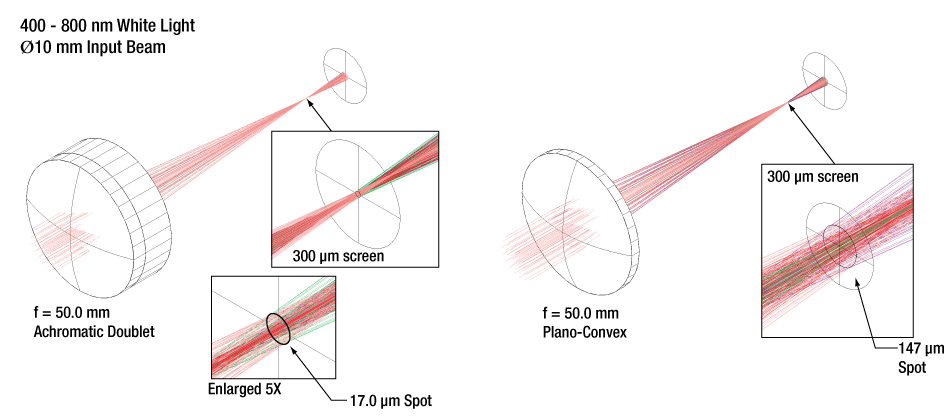
| Damage Threshold Specifications | |
|---|---|
| A-Coated, Cemented Achromatic Doublets | |
| Pulsed | 0.5 J/cm2 (532 nm, 10 ns, 10 Hz, Ø0.566 mm) |
| CWa | 300 W/cm (532 nm, Ø1.000 mm) |
当社のAコーティング付きアクロマティック複レンズの損傷閾値データ
右の仕様は、当社のAコーティング付きアクロマティック複レンズの測定値です。より高い損傷閾値が必要な場合には、当社のエアスペース型複レンズをご検討ください。損傷閾値の仕様は、レンズのサイズや焦点距離にかかわらず全てのAコーティング付きアクロマティック複レンズで同じです。
レーザによる損傷閾値について
このチュートリアルでは、レーザ損傷閾値がどのように測定され、使用する用途に適切な光学素子の決定にその値をどのようにご利用いただけるかを総括しています。お客様のアプリケーションにおいて、光学素子を選択する際、光学素子のレーザによる損傷閾値(Laser Induced Damage Threshold :LIDT)を知ることが重要です。光学素子のLIDTはお客様が使用するレーザの種類に大きく依存します。連続(CW)レーザは、通常、吸収(コーティングまたは基板における)によって発生する熱によって損傷を引き起こします。一方、パルスレーザは熱的損傷が起こる前に、光学素子の格子構造から電子が引き剥がされることによって損傷を受けます。ここで示すガイドラインは、室温で新品の光学素子を前提としています(つまり、スクラッチ&ディグ仕様内、表面の汚染がないなど)。光学素子の表面に塵などの粒子が付くと、低い閾値で損傷を受ける可能性があります。そのため、光学素子の表面をきれいで埃のない状態に保つことをお勧めします。光学素子のクリーニングについては「光学素子クリーニングチュートリアル」をご参照ください。
テスト方法
当社のLIDTテストは、ISO/DIS 11254およびISO 21254に準拠しています。
初めに、低パワー/エネルギのビームを光学素子に入射します。その光学素子の10ヶ所に1回ずつ、設定した時間(CW)またはパルス数(決められたprf)、レーザを照射します。レーザを照射した後、倍率約100倍の顕微鏡を用いた検査で確認し、すべての確認できる損傷を調べます。特定のパワー/エネルギで損傷のあった場所の数を記録します。次に、そのパワー/エネルギを増やすか減らすかして、光学素子にさらに10ヶ所レーザを照射します。このプロセスを損傷が観測されるまで繰返します。損傷閾値は、光学素子が損傷に耐える、損傷が起こらない最大のパワー/エネルギになります。1つのミラーBB1-E02の試験結果はFigure 37Bのようなヒストグラムになります。
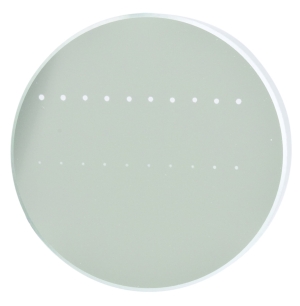
Figure 37A 写真はアルミニウムをコーティングしたミラーでLIDTテストを終えたものです。このテストは、損傷を受ける前のレーザのエネルギは0.43 J/cm2 (1064 nm、10 ns pulse、 10 Hz、Ø1.000 mm)でした。

Figure 37B ミラーBB1-E02のLIDTを決定するために使用した露光のヒストグラム(例)
| Table 37C Example Test Data | |||
|---|---|---|---|
| Fluence | # of Tested Locations | Locations with Damage | Locations Without Damage |
| 1.50 J/cm2 | 10 | 0 | 10 |
| 1.75 J/cm2 | 10 | 0 | 10 |
| 2.00 J/cm2 | 10 | 0 | 10 |
| 2.25 J/cm2 | 10 | 1 | 9 |
| 3.00 J/cm2 | 10 | 1 | 9 |
| 5.00 J/cm2 | 10 | 9 | 1 |
試験結果によれば、ミラーの損傷閾値は 2.00 J/cm2 (532 nm、10 ns pulse、10 Hz、 Ø0.803 mm)でした。尚、汚れや汚染によって光学素子の損傷閾値は大幅に低減されるため、こちらの試験はクリーンな光学素子で行っています。また、特定のロットのコーティングに対してのみ試験を行った結果ではありますが、当社の損傷閾値の仕様は様々な因子を考慮して、実測した値よりも低めに設定されており、全てのコーティングロットに対して適用されています。
CWレーザと長パルスレーザ
光学素子がCWレーザによって損傷を受けるのは、通常バルク材料がレーザのエネルギを吸収することによって引き起こされる溶解、あるいはAR(反射防止)コーティングのダメージによるものです[1]。1 µsを超える長いパルスレーザについてLIDTを論じる時は、CWレーザと同様に扱うことができます。
パルス長が1 nsと1 µs の間のときは、損傷は吸収、もしくは絶縁破壊のどちらかで発生していると考えることができます(CWとパルスのLIDT両方を調べなければなりません)。吸収は光学素子の固有特性によるものか、表面の不均一性によるものかのどちらかによって起こります。従って、LIDTは製造元の仕様以上の表面の質を有する光学素子にのみ有効です。多くの光学素子は、ハイパワーCWレーザで扱うことができる一方、アクロマティック複レンズのような接合レンズやNDフィルタのような高吸収光学素子は低いCWレーザ損傷閾値になる傾向にあります。このような低い損傷閾値は接着剤や金属コーティングにおける吸収や散乱によるものです。
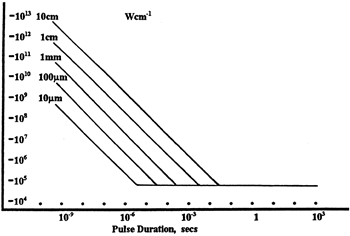
Figure 37D 線形パワー密度におけるLIDTに対するパルス長とスポットサイズ。長パルス~CWでは線形パワー密度はスポットサイズにかかわらず一定です。 このグラフの出典は[1]です。

Figure 37E 均一ビームとガウシアンビームの強度分布プロファイル
繰返し周波数(prf)の高いパルスレーザは、光学素子に熱的損傷も引き起こします。この場合は吸収や熱拡散率のような因子が深く関係しており、残念ながらprfの高いレーザが熱的影響によって光学素子に損傷を引き起こす場合の信頼性のあるLIDTを求める方法は確立されておりません。prfの大きいビームでは、平均出力およびピークパワーの両方を等しいCW出力と比較する必要があります。また、非常に透過率の高い材料では、prfが上昇してもLIDTの減少は皆無かそれに近くなります。
ある光学素子の固有のCWレーザの損傷閾値を使う場合には、以下のことを知る必要があります。
- レーザの波長
- ビーム径(1/e2)
- ビームのおおよその強度プロファイル(ガウシアン型など)
- レーザのパワー密度(トータルパワーをビームの強度が1/e2の範囲の面積で割ったもの)
ビームのパワー密度はW/cmの単位で計算します。この条件下では、出力密度はスポットサイズとは無関係になります。つまり、スポットサイズの変化に合わせてLIDTを計算し直す必要がありません(Figure 37D参照)。平均線形パワー密度は、下の計算式で算出できます。

ここでは、ビーム強度プロファイルは一定であると仮定しています。次に、ビームがホットスポット、または他の不均一な強度プロファイルの場合を考慮して、おおよその最大パワー密度を計算する必要があります。ご参考までに、ガウシアンビームのときはビームの強度が1/e2の2倍のパワー密度を有します(Figure 37E参照)。
次に、光学素子のLIDTの仕様の最大パワー密度を比較しましょう。損傷閾値の測定波長が光学素子に使用する波長と異なっている場合には、その損傷閾値は適宜補正が必要です。おおよその目安として参考にできるのは、損傷閾値は波長に対して比例関係であるということです。短い波長で使う場合、損傷閾値は低下します(つまり、1310 nmで10 W/cmのLIDTならば、655 nmでは5 W/cmと見積もります)。

この目安は一般的な傾向ですが、LIDTと波長の関係を定量的に示すものではありません。例えば、CW用途では、損傷はコーティングや基板の吸収によってより大きく変化し、必ずしも一般的な傾向通りとはなりません。上記の傾向はLIDT値の目安として参考にしていただけますが、LIDTの仕様波長と異なる場合には当社までお問い合わせください。パワー密度が光学素子の補正済みLIDTよりも小さい場合、この光学素子は目的の用途にご使用いただけます。
当社のウェブ上の損傷閾値の仕様と我々が行った実際の実験の値の間にはある程度の差があります。これはロット間の違いによって発生する誤差を許容するためです。ご要求に応じて、当社は個別の情報やテスト結果の証明書を発行することもできます。損傷解析は、類似した光学素子を用いて行います(お客様の光学素子には損傷は与えません)。試験の費用や所要時間などの詳細は、当社までお問い合わせください。
パルスレーザ
先に述べたように、通常、パルスレーザはCWレーザとは異なるタイプの損傷を光学素子に引き起こします。パルスレーザは損傷を与えるほど光学素子を加熱しませんが、光学素子から電子をひきはがします。残念ながら、お客様のレーザに対して光学素子のLIDTの仕様を照らし合わせることは非常に困難です。パルスレーザのパルス幅に起因する光学素子の損傷には、複数の形態があります。Table 37Fのハイライトされた列は当社の仕様のLIDT値が当てはまるパルス幅に対する概要です。
パルス幅が10-9 sより短いパルスについては、当社の仕様のLIDT値と比較することは困難です。この超短パルスでは、多光子アバランシェ電離などのさまざまなメカニクスが損傷機構の主流になります[2]。対照的に、パルス幅が10-7 sと10-4 sの間のパルスは絶縁破壊、または熱的影響により光学素子の損傷を引き起こすと考えられます。これは、光学素子がお客様の用途に適しているかどうかを決定するために、レーザービームに対してCWとパルス両方による損傷閾値を参照しなくてはならないということです。
| Table 37F Laser Induced Damage Regimes | ||||
|---|---|---|---|---|
| Pulse Duration | t < 10-9 s | 10-9 < t < 10-7 s | 10-7 < t < 10-4 s | t > 10-4 s |
| Damage Mechanism | Avalanche Ionization | Dielectric Breakdown | Dielectric Breakdown or Thermal | Thermal |
| Relevant Damage Specification | No Comparison (See Above) | Pulsed | Pulsed and CW | CW |
お客様のパルスレーザに対してLIDTを比較する際は、以下のことを確認いただくことが重要です。
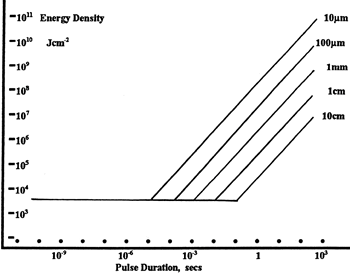
Figure 37G エネルギ密度におけるLIDTに対するパルス長&スポットサイズ。短パルスでは、エネルギ密度はスポットサイズにかかわらず一定です。このグラフの出典は[1]です。
- レーザの波長
- ビームのエネルギ密度(トータルエネルギをビームの強度が1/e2の範囲の面積で割ったもの)
- レーザのパルス幅
- パルスの繰返周波数(prf)
- 実際に使用するビーム径(1/e2 )
- ビームのおおよその強度プロファイル(ガウシアン型など)
ビームのエネルギ密度はJ/cm2の単位で計算します。Figure 37Gは、短パルス光源には、エネルギ密度が適した測定量であることを示しています。この条件下では、エネルギ密度はスポットサイズとは無関係になります。つまり、スポットサイズの変化に合わせてLIDTを計算し直す必要がありません。ここでは、ビーム強度プロファイルは一定であると仮定しています。ここで、ビームがホットスポット、または他の不均一な強度プロファイルの場合を考慮して、おおよその最大パワー密度を計算する必要があります。ご参考までに、ガウシアンビームのときは一般にビームの強度が1/e2のときの2倍のパワー密度を有します。
次に、光学素子のLIDTの仕様と最大エネルギ密度を比較しましょう。損傷閾値の測定波長が光学素子に使用する波長と異なっている場合には、その損傷閾値は適宜補正が必要です[3]。経験則から、損傷閾値は波長に対して以下のような平方根の関係であるということです。短い波長で使う場合、損傷閾値は低下します(例えば、1064 nmで 1 J/cm2のLIDTならば、532 nmでは0.7 J/cm2と計算されます)。

波長を補正したエネルギ密度を得ました。これを以下のステップで使用します。
ビーム径は損傷閾値を比較する時にも重要です。LIDTがJ/cm2の単位で表される場合、スポットサイズとは無関係になりますが、ビームサイズが大きい場合、LIDTの不一致を引き起こす原因でもある不具合が、より明らかになる傾向があります[4]。ここで示されているデータでは、LIDTの測定には<1 mmのビーム径が用いられています。ビーム径が5 mmよりも大きい場合、前述のようにビームのサイズが大きいほど不具合の影響が大きくなるため、LIDT (J/cm2)はビーム径とは無関係にはなりません。
次に、パルス幅について補正します。パルス幅が長くなるほど、より大きなエネルギに光学素子は耐えることができます。パルス幅が1~100 nsの場合の近似式は以下のようになります。

お客様のレーザのパルス幅をもとに、光学素子の補正されたLIDTを計算するのにこの計算式を使います。お客様の最大エネルギ密度が、この補正したエネルギ密度よりも小さい場合、その光学素子はお客様の用途でご使用いただけます。ご注意いただきたい点は、10-9 s と10-7 sの間のパルスにのみこの計算が使えることです。パルス幅が10-7 sと10-4 sの間の場合には、CWのLIDTも調べなければなりません。
当社のウェブ上の損傷閾値の仕様と我々が行った実際の実験の値の間にはある程度の差があります。これはロット間の違いによって発生する誤差を許容するためです。ご要求に応じて、当社では個別のテスト情報やテスト結果の証明書を発行することも可能です。詳細は、当社までお問い合わせください。
[1] R. M. Wood, Optics and Laser Tech. 29, 517 (1998).
[2] Roger M. Wood, Laser-Induced Damage of Optical Materials (Institute of Physics Publishing, Philadelphia, PA, 2003).
[3] C. W. Carr et al., Phys. Rev. Lett. 91, 127402 (2003).
[4] N. Bloembergen, Appl. Opt. 12, 661 (1973).
レーザーシステムが光学素子に損傷を引き起こすかどうか判断するプロセスを説明するために、レーザによって引き起こされる損傷閾値(LIDT)の計算例をいくつかご紹介します。同様の計算を実行したい場合には、右のボタンをクリックしてください。計算ができるスプレッドシートをダウンロードいただけます。ご使用の際には光学素子のLIDTの値と、レーザーシステムの関連パラメータを緑の枠内に入力してください。スプレッドシートでCWならびにパルスの線形パワー密度、ならびにパルスのエネルギ密度を計算できます。これらの値はスケーリング則に基づいて、光学素子のLIDTの調整スケール値を計算するのに用いられます。計算式はガウシアンビームのプロファイルを想定しているため、ほかのビーム形状(均一ビームなど)には補正係数を導入する必要があります。 LIDTのスケーリング則は経験則に基づいていますので、確度は保証されません。なお、光学素子やコーティングに吸収があると、スペクトル領域によってLIDTが著しく低くなる場合があります。LIDTはパルス幅が1ナノ秒(ns)未満の超短パルスには有効ではありません。

Figure 71A ガウシアンビームの最大強度は均一ビームの約2倍です。
CWレーザの例
波長1319 nm、ビーム径(1/e2)10 mm、パワー0.5 Wのガウシアンビームを生成するCWレーザーシステム想定します。このビームの平均線形パワー密度は、全パワーをビーム径で単純に割ると0.5 W/cmとなります。

しかし、ガウシアンビームの最大パワー密度は均一ビームの約2倍です(Figure 71A参照)。従って、システムのより正確な最大線形パワー密度は1 W/cmとなります。
アクロマティック複レンズAC127-030-CのCW LIDTは、1550 nmでテストされて350 W/cmとされています。CWの損傷閾値は通常レーザ光源の波長に直接スケーリングするため、LIDTの調整値は以下のように求められます。

LIDTの調整値は350 W/cm x (1319 nm / 1550 nm) = 298 W/cmと得られ、計算したレーザーシステムのパワー密度よりも大幅に高いため、この複レンズをこの用途に使用しても安全です。
ナノ秒パルスレーザの例:パルス幅が異なる場合のスケーリング
出力が繰返し周波数10 Hz、波長355 nm、エネルギ1 J、パルス幅2 ns、ビーム径(1/e2)1.9 cmのガウシアンビームであるNd:YAGパルスレーザーシステムを想定します。各パルスの平均エネルギ密度は、パルスエネルギをビームの断面積で割って求めます。

上で説明したように、ガウシアンビームの最大エネルギ密度は平均エネルギ密度の約2倍です。よって、このビームの最大エネルギ密度は約0.7 J/cm2です。
このビームのエネルギ密度を、広帯域誘電体ミラーBB1-E01のLIDT 1 J/cm2、そしてNd:YAGレーザーラインミラーNB1-K08のLIDT 3.5 J/cm2と比較します。LIDTの値は両方とも、波長355 nm、パルス幅10 ns、繰返し周波数10 Hzのレーザで計測しました。従って、より短いパルス幅に対する調整を行う必要があります。 1つ前のタブで説明したようにナノ秒パルスシステムのLIDTは、パルス幅の平方根にスケーリングします:

この調整係数により広帯域誘電体ミラーBB1-E01のLIDTは0.45 J/cm2に、Nd:YAGレーザーラインミラーのLIDTは1.6 J/cm2になり、これらをビームの最大エネルギ密度0.7 J/cm2と比較します。広帯域ミラーはレーザによって損傷を受ける可能性があり、より特化されたレーザーラインミラーがこのシステムには適していることが分かります。
ナノ秒パルスレーザの例:波長が異なる場合のスケーリング
波長1064 nm、繰返し周波数2.5 Hz、パルスエネルギ100 mJ、パルス幅10 ns、ビーム径(1/e2)16 mmのレーザ光を、NDフィルタで減衰させるようなパルスレーザーシステムを想定します。これらの数値からガウシアン出力における最大エネルギ密度は0.1 J/cm2になります。Ø25 mm、OD 1.0の反射型NDフィルタ NDUV10Aの損傷閾値は355 nm、10 nsのパルスにおいて0.05 J/cm2で、同様の吸収型フィルタ NE10Aの損傷閾値は532 nm、10 nsのパルスにおいて10 J/cm2です。1つ前のタブで説明したように光学素子のLIDTは、ナノ秒パルス領域では波長の平方根にスケーリングします。

スケーリングによりLIDTの調整値は反射型フィルタでは0.08 J/cm2、吸収型フィルタでは14 J/cm2となります。このケースでは吸収型フィルタが光学損傷を防ぐには適した選択肢となります。
マイクロ秒パルスレーザの例
パルス幅1 µs、パルスエネルギ150 µJ、繰返し周波数50 kHzで、結果的にデューティーサイクルが5%になるレーザーシステムについて考えてみます。このシステムはCWとパルスレーザの間の領域にあり、どちらのメカニズムでも光学素子に損傷を招く可能性があります。レーザーシステムの安全な動作のためにはCWとパルス両方のLIDTをレーザーシステムの特性と比較する必要があります。
この比較的長いパルス幅のレーザが、波長980 nm、ビーム径(1/e2)12.7 mmのガウシアンビームであった場合、線形パワー密度は5.9 W/cm、1パルスのエネルギ密度は1.2 x 10-4 J/cm2となります。これをポリマーゼロオーダ1/4波長板WPQ10E-980のLIDTと比較してみます。CW放射に対するLIDTは810 nmで5 W/cm、10 nsパルスのLIDTは810 nmで5 J/cm2です。前述同様、光学素子のCW LIDTはレーザ波長と線形にスケーリングするので、CWの調整値は980 nmで6 W/cmとなります。一方でパルスのLIDTはレーザ波長の平方根とパルス幅の平方根にスケーリングしますので、1 µsパルスの980 nmでの調整値は55 J/cm2です。光学素子のパルスのLIDTはパルスレーザのエネルギ密度よりはるかに大きいので、個々のパルスが波長板を損傷することはありません。しかしレーザの平均線形パワー密度が大きいため、高出力CWビームのように光学素子に熱的損傷を引き起こす可能性があります。
| Posted Comments: | |
Daniel Sablowski
(posted 2025-06-05 11:09:14.807) Hello, regarding the glass type, it is written sometimes e.g. SF5 or N-SF5. I guess all glass types are from the "N" type regardless if the N is missing in your describtion?
Thanks! skent
(posted 2025-06-13 08:19:52.0) Thank you for your Feedback. Yes the glass types should be the N type even if called out without the N. This is an error and will be updated. Andriy Tsupryk
(posted 2024-10-02 09:37:25.547) Is it possible to order custom version of AC508-150-A? In particular, I need more Clear Aperture (up to 70mm). Please advise. jdelia
(posted 2024-10-09 09:43:38.0) Thank you for contacting Thorlabs! It is possible to provide custom version of achromatic doublets, we can provide up to 3" diameters max depending on the design, we will reach out to you directly to discuss this further. For future custom requests, please feel free to reach out to your local tech support team (in your case: techsupport@thorlabs.com). Michael Baird
(posted 2024-06-07 21:07:18.297) I ordered two of these lenses, they are A grade. And I paid for the A grade. But the lenses shipped to me were B grade, and the invoice confirms this.
These are the worst lenses I've ever seen. Junk. Flaws galore.
I want someone to call me and tell me why I ordered, and paid, for an A grade lens but was shipped Junk. cdolbashian
(posted 2024-06-21 04:01:32.0) Thank you for contacting Thorlabs. We are very sorry to hear that you are disappointed about the AC254-050-B. We contact you directly about RMA and further discussion. Eric Boltersdorf
(posted 2023-08-22 11:16:49.5) Dear Sir or Madam,
do you have values for the transmission between 385nm and 400nm for this product?
Best Regards,
Eric cdolbashian
(posted 2023-08-30 10:13:53.0) Thank you for contacting Thorlabs! We will send the typical data to you via email, please note that slight variations in performance data will occur from lot to lot. Teng Liu
(posted 2023-06-06 15:43:16.057) Hi, I was wondering if you would like to provide an AC508-125-A lens. Currently, my setup needs such a lens. Does it possible to be customer inspired?
Thanks a lot! cdolbashian
(posted 2023-06-12 09:50:17.0) Thank you for reaching out to us with this inquiry. While I do not know if we can make this product at the present time, I have certainly submitted this to our internal product development forum. Perhaps in the future it will indeed be customer inspired. I have additionally contacted you directly to discuss your application. fred couweleers
(posted 2021-09-21 09:41:12.67) why can I no longer order achromat AC508-250-A?
you cannot just without notice change the design of the lens! YLohia
(posted 2021-10-07 08:21:22.0) Thank you for contacting Thorlabs. The 50.8 mm achromatic doublet lenses have been redesigned with an increased thickness. This mitigates issues caused by stress from the adhesive and improves overall performance. We apologize for any inconvenience cause by the redesign. Our OEM team was in touch with your organization last year in January and you were duly notified of the changes. You also received the CAD files for new lenses. We have directly reached out to you with our previous exchanges. Kayoko Fujimura
(posted 2021-08-30 20:55:25.723) AC127-075-Aの外形を□3~4mmの正方形にカットしたいと考えております。
・このようなサイズにカットして頂くことは可能でしょうか。
・加工できる場合、偏心や光軸の傾きはどの程度の大きさ (精度)になるでしょうか。 YLohia
(posted 2021-09-01 10:46:20.0) Hello, an applications engineer from our team in Japan (techsupport.jp@thorlabs.com) will discuss this directly with you. fred couweleers
(posted 2019-04-02 07:25:59.623) is the spherical power tolerance in terms of rings in an interferogram or is is actual deviation (in metres)? YLohia
(posted 2019-04-08 08:38:27.0) Hello, thank you for contacting Thorlabs. The spherical surface power spec is given in terms of the rings in an interferogram. f.delcul
(posted 2019-02-28 15:47:38.837) Hi,
you gave a bad answer. We call a "Doublet" the simplest form of corrected system made of 2 lenses. The maximum achievable system is an aplanatic one with good selection of glasses, so corrected for spherical and coma and also for chromatic aberration. If i follow your mind: it is only an achromatic doublet, i can suggest it is is not corrected for spherical aberration too!. The simple reason for correcting coma in a doublet system is in alignment. An uncorrected coma doublet require a perfect aligment. In a true world it is really difficult to achieve and this is why coma is also corrected. Most of the doublet Thorlabs sell are aplanatic and corrected for coma. This one doesn't respect the rule, to be honest, the simplest fact the rear surface is concave means this doublet was calculated without small amount of field, a mistake in optical calculation!
Best regards
Fabrice Del Cul nbayconich
(posted 2019-03-13 01:54:38.0) Hello again, thank you for bringing this to our attention. We will look into revisiting the designs for these achromats to improve their performance. f.delcul
(posted 2019-02-07 17:28:49.653) Hi Thorlabs crew,
i looked about performance of AC254-200-A doublet and found it is not aplanatic! Shame on you :-). It exhibits strong coma! You need to review optical formula. Best regards. Fabrice Del Cul nbayconich
(posted 2019-02-27 10:08:48.0) Thank you for contacting Thorlabs. My apologies if there was a misunderstanding to these products. These are spherical achromatic doublets and are not designed to have an aspheric surface. I would suggest using the hasting's triplets in order to reduce the amount of coma produced in your application. Please see the link below.
https://www.thorlabs.us/newgrouppage9.cfm?objectgroup_id=5368 cittadinilaser
(posted 2018-10-31 15:48:16.613) Dears Sirs
I have a question about : For best performance, the side of the lens with the largest radius of curvature (flattest side) should face away from the collimated beam. Doublets Ø1/2" and larger are engraved with the part number on the lens so when it is oriented right side up, the flattest side of the lens is the bottom surface. Please see the diagram under the reference drawing link below for additional details.?
In aplication , it seems totally different
Flatttest side is with it´s face to the collimated beam
Please explain the correct position
Thanks in advance
Best Regards
Fernando Cittadini nbayconich
(posted 2018-11-19 02:47:34.0) Thank you for contacting Thorlabs. The flatter side of the lens should always face the focused spot of your beam. The reference drawings on our webpage will indicate the direction of travel your collimated beam should take which should be incident on the most curved surface of the achromatic lens. ethan.cohen
(posted 2017-08-12 00:24:55.46) It would not hurt to widen the transmission curves to show the near IR performance, as this is often used in microscopy. tfrisch
(posted 2017-09-14 11:19:29.0) Hello, thank you for contacting Thorlabs. While I expect variation from one coating run to another, I can send you sample data on the coating reflectivity a bit farther into the IR user
(posted 2016-08-02 11:40:58.313) Do you use NOA61 for cement? If so, the NOA absorbs about 5% of light. Can you share the transmission for each lens? bo.jing
(posted 2016-04-01 16:57:32.013) Would it be possible for you to offer a 1/2", 100mm lens with A coating? I.e. AC127-100-A
Regards besembeson
(posted 2016-04-05 08:50:29.0) Response from Bweh at Thorlabs USA: Yes we can offer this as a special item. I will contact you. MichaelSchwertner
(posted 2015-06-09 09:35:48.663) Dear Thorlabs,
for the Achromats you list the the back focal length on axis. For integration and using CAD, however, it is often useful to also have the BFL value on the edge of the lens. This can be calculated from the BFL on axis and R3 but it would be nice to have this on-edge value of the BFL also in the table. Could you list it please? It would make your website even better.
Thank you and greetings,
Michael besembeson
(posted 2015-09-21 09:10:41.0) Response from Bweh at Thorlabs USA: Thanks for the feedback. We will review this and I will follow up with you with the values for the lenses that are of interest to you. christiaanhulleman
(posted 2014-11-24 17:16:26.52) Is the reflectivity data of the AR coating per lens or per surface? So these lenses would have 2 surfaces each. jlow
(posted 2014-11-25 11:19:04.0) Response from Jeremy at Thorlabs: The reflectivity is per surface. 1039805428
(posted 2014-02-23 15:18:09.86) My fellow bought a lens "AC254-030-A". When I opened the ZEMAX file, it shown 'COATINGTHRO.DAT can't open'. I searched the Zemax install location, I had no this file. Could you send it for me? Thanks very much! jlow
(posted 2014-02-27 02:45:43.0) Response from Jeremy at Thorlabs: We recommend using the .zar files which are a pack and go Zemax zip file which contain both the coating and the lens data. If you cannot use the .zar file format, a simple solution would be to remove the coating from the lens. basili
(posted 2013-10-31 12:14:23.637) It has been shown, in the application page, the spot diameter is 3.6µm for achromatic Doublet and 15µm for Plano-Convex spherical singlet. Both results obtained at 633nm wavelength, φ10mm input beam and 50.0mm focal length. I would like to know formula used in those calculations. jlow
(posted 2013-10-31 03:49:05.0) Response from Jeremy at Thorlabs: The results were obtained using Zemax simulation software. james.parker
(posted 2013-02-07 06:29:34.31) Are you able to provide a CW laser damage threshold for these lenses please? tcohen
(posted 2012-09-27 09:36:00.0) Response from Tim at Thorlabs: We have provided .zar files on the website to allow more information to the user. For users with incompatible versions of Zemax we can provide both individual files and the complete catalog in .zmx format. I will contact you directly to provide this. carlos.macias
(posted 2012-09-25 15:42:58.0) Hi, cant manage to open the *.zar file in my version of zemax. Is there any link to *.zmx files? Many thanks tcohen
(posted 2012-09-18 15:44:00.0) Response from Tim at Thorlabs: These are spherical achromats. Currently we offer air spaced achromats at http://www.thorlabs.com/NewGroupPage9.cfm?ObjectGroup_ID=6083 which have superior performance to cemented versions (see the “Lens Comparison” tab for this data). Furthermore, we are currently working on introducing many new optics which include precision aspherized achromatic lenses. Please contact us at techsupport@thorlabs.com if you would like updates in the process. paul.lauria
(posted 2012-09-14 20:38:47.0) Wondering if these are aspherized as well? Edmund and Newport both have aspherized achromatic doublets, does Thorlabs? Haven't found them if so. regis.sarcia
(posted 2012-07-27 08:07:37.0) Hi, we already use this lens in one of our products and are pretty happy about it. I have to modify the system to measure under 400nm, could you please give me a graph of transmission of the lens between 320nm and 450nm? (no reflection graph please but really the transmission taking into account the absorbance of the lens materials)
thank you in advance
Régis bdada
(posted 2012-01-12 21:14:00.0) Response from Buki at Thorlabs:
You can use solvents like acetone or iso propyl alcohol. Please refer to our optics cleaning guide linked below for more information and contact TechSupport@thorlabs.com if you have any questions.
http://www.thorlabs.com/tutorials.cfm?tabID=26066 luyang
(posted 2012-01-12 17:44:42.0) Can you please let me know how can I clean 1050-1620 achromatic doublet lens with C coating. I found a few finger prints on the lens and I'm afraid of scratch the coating using lens paper. Also can I use solvent to clean without destroying the coating?
Thanks,
Yang bdada
(posted 2011-11-09 10:58:00.0) Response from Buki at Thorlabs:
Thank you for participating in our Feedback Forum. The right material is N-BAF10/N-SF6HT, not N-BAFN10 and N-SFL6HT. We have corrected this typographical error on our website.
Our current doublets are cemented together but we plan to release air spaced achromatic doublets soon, which will not require epoxy. Please contact TechSupport@thorlabs.com if you have further questions. murray.davies
(posted 2011-11-07 17:04:44.0) Can you tell me if the index data your N-BAFN10 and N-SFL6HT is the same as for N-BAF10/N-SF6HT?
Do you make the AC050-008-A1 without using glue? I am doing single photon counting and I am concerned with fluorescence in the glue. jjurado
(posted 2011-04-06 16:05:00.0) Response from Javier at Thorlabs to marco.malinverni: Thank you very much for contacting us. The materials used in this lens are N-BAF10 and SF10, which are highly absorptive below the ~380 nm range. For example, a 10 mm sample of N-BAF10 glass has an internal transmittance of only 17% at 350 nm, and a 10 mm sample of SF10 has a transmittance value of 5.8% at 365 nm. The loss is then mostly attributed to absorption. I will contact you directly for further assistance. marco.malinverni
(posted 2011-04-06 17:57:49.0) How is the absorption of this lens (AC508-100-A1) for wavelengths in the range of 250-300nm? And the focal shift. Thanks. jjurado
(posted 2011-02-08 17:11:00.0) Response from Javier at Thorlabs to bmangum: Thank you very much for contacting us with your request. Although we have not characterized any possible fluorescence effects arising from our achromatic doublets, you are correct in assessing that this behavior is most likely due to the cement used. We are currently working on a new line of air-spaced achromatic doublets which would do away with any fluorescence effects; however, they will not be available for another 4-5 months. I will ocntact you directly to discuss your application a bit further. bmangum
(posted 2011-02-07 19:55:52.0) I am using several focal lengths of these achromats of these lenses with the A coating. I am exciting with several tens of mW of 405 CW laser. I get strong fluorescence coming from the lens. I tested with some other A coated lenses I have and it must be coming from the cement. Have you characterized this before? I really need achromatic lenses for my fluorescence application - but then I am always stuck with the cement issue. Any advice on other products that might work? Thorlabs
(posted 2010-12-06 10:23:32.0) Response from Javier at Thorlabs to hs49: the main tolerance specifications for all of our achromatic lenses are specified on the technical drawing (in pdf format), available under the documents icon ("D) next to each lens part number. For further information, please contact techsupport@thorlabs.com. hs49
(posted 2010-12-03 11:01:07.0) Are there manufacturing tolerance values available for these achromats in terms of surface decenters, tilts, etc.? I need to model their performance in ZEMAX. Thorlabs
(posted 2010-11-08 09:26:30.0) Response from Javier at Thorlabs to Ruelas: We tested some of the links, and they are working properly. I will send you the zmx file for the AC254-250-A shortly. ruelas
(posted 2010-11-05 17:17:37.0) I am trying to obtain the zemax files for 2"OD f=25 cm and 2" OD f=15cm visible achromats. It seems that all the zemax links are broken. jens
(posted 2009-06-19 09:06:42.0) A reply from Jens at Thorlabs: the zemax files can be found under the Documents and Drawings Tab by selecting the corresponding file from column called MFG Spec Thorlabs
(posted 2010-09-17 11:21:00.0) Response from Javier at Thorlabs to carollo:
The damage threshold values we have tested for our achromatic doublet lenses are as follows:
-A coated lenses: 0.5 J/cm^2 (tested at 532nm, 10 ns pulse witdh, 10 Hz rep. rate)
-B coated lenses: 5.0 J/cm^2 (tested at 810 nm, 10 ns pulse witdh, 10 Hz rep. rate)
-C coated lenses: 5.0 J/cm^2 (tested at 1542 nm, 10 ns pulse witdh, 10 Hz rep. rate) carollo
(posted 2010-09-16 17:23:22.0) Hi,
I am interested in using an achromatic lens in a pulsed laser application. Could you please list or send me the specs for the optical damage threshold of the cemented lens?
Thanks,
Ryan Javier
(posted 2010-06-07 21:37:18.0) Response from Javier at Thorlabs to guille2306: We can certainly offer uncoated versions of our MgF2 lenses. We will contact you with details regarding a quotation for these mirrors, reflectivity curves, and we would also be interested in knowing more about your application. guille2306
(posted 2010-06-07 11:54:15.0) Are there uncoated or MgF2 coated versions of this lenses? If yes, do you have reflectivity curves in the 400-1000nm region? jens
(posted 2010-03-29 13:40:57.0) A reply from Jens at Thorlabs to guille2306: we have calculated the reflectivity curve for the visible coating over an extended range. It turns out that the reflectivity will increase to a value of about 8% at 1000nm. I will send you the curve together with data on focal shift information over this range. As initial information the focal lenght will increase by 0.54mm at 1000nm for the AC508-075-A. guille2306
(posted 2010-03-26 17:22:28.0) Hi, I would like to use a single achromatic doublet for the 450-950nm range. Which would be the typical reflectivity of the visible anti-reflection coating in the near infrared (700-1000nm)? And conversely, which would be the typical reflectivity of the near-IR coating in the visible range? jnchacon
(posted 2009-06-18 19:28:58.0) Hi, Im working in the design of a spectrograph and i was thinking to use one of this doublets.
I need the Zemax files in order to evaluate the image quality of the system. Can you tell me where are the zemax file?
Thank.
Juan Chacón (from Chile) technicalmarketing
(posted 2008-01-21 10:12:09.0) As requested, a column has been added to the table in the "Specs" tab that lists a recommended mounting option for each lens. When choosing a lens mount be careful to match the lens diameter and edge thickness specifications to the lens mount. Thank you for the presentation feedback. acable
(posted 2008-01-18 07:20:14.0) Can you add a link from the Specs Tab to the recommended compatible mount within the large table. technicalmarketing
(posted 2008-01-10 14:14:29.0) At this time, our achromatic doublets are not RoHS compliant, and therefore, the type of glass used is SF5 (not N-SF5) and BAFN10 (not N-BAF10). yinnon.glickman
(posted 2008-01-09 04:57:04.0) Hello
Im interested in achromatic doubles. I would like to know the precise type of glass (by Schott catalog) which you refer to as SF5 (is it SF5 or N-SF5?) and BAFN10 (is it N-BAF10?).
Ragards
Yinnon Glickman |

| Item # | Diameter (mm) | f a (mm) | fba (mm) | Graphsb | R1a (mm) | R2a (mm) | R3a (mm) | tc1 (mm) | tc2 (mm) | tec (mm) | Materialsd | Compatible Fixed Lens Mounts | Reference Drawing |
|---|---|---|---|---|---|---|---|---|---|---|---|---|---|
| AC050-008-A | 5.0 | 7.5 | 5.2 | 5.3 | -3.9 | -17.1 | 2.8 | 1.7 | 3.7 | N-BAF10/N-SF6HT | MLH5(/M) See Footnote e | ||
| AC050-010-A | 5.0 | 10.0 | 7.9 | 6.6 | -4.3 | -15.4 | 2.5 | 1.9 | 3.7 | N-BAK4/SF5 | |||
| AC050-015-A | 5.0 | 15.0 | 13.6 | 12.5 | -5.3 | -12.1 | 2.7 | 2.1 | 4.3 | N-BK7/SF2 | See Footnote e |

| Item # | Diameter (mm) | f a (mm) | fba (mm) | Graphsb | R1a (mm) | R2a (mm) | R3a (mm) | tc1 (mm) | tc2 (mm) | tec (mm) | Materialsd | Compatible Fixed Lens Mounts | Reference Drawing |
|---|---|---|---|---|---|---|---|---|---|---|---|---|---|
| AC080-010-A | 8.0 | 10.0 | 6.7 | 7.1 | -5.3 | -22.7 | 4.5 | 2.0 | 4.9 | N-BAF10/N-SF6HT | MLH8(/M) See Footnote e | ||
| AC080-016-A | 8.0 | 16.0 | 13.9 | 11.0 | -9.2 | -46.8 | 2.5 | 1.5 | 3.1 | N-BAF10/N-SF6HT | MLH8(/M) LMR8(/M) See Footnote e | ||
| AC080-020-A | 8.0 | 20.0 | 17.8 | 11.1 | -9.2 | -34.8 | 2.5 | 1.5 | 3.0 | N-BK7/SF2 | |||
| AC080-030-A | 8.0 | 30.0 | 27.8 | 16.0 | -13.5 | -59.4 | 2.5 | 1.5 | 3.4 | N-BK7/N-SF2 |

| Item # | Diameter (mm) | f a (mm) | fba (mm) | Graphsb | R1a (mm) | R2a (mm) | R3a (mm) | tc1 (mm) | tc2 (mm) | tec (mm) | Materialsd | Compatible Fixed Lens Mounts | Reference Drawing |
|---|---|---|---|---|---|---|---|---|---|---|---|---|---|
| ACN127-050-A | 12.7 | -50.0 | -52.3 | -25.6 | 25.6 | 372.7 | 1.5 | 2.2 | 4.6 | N-BAK4/SF5 | MLH05(/M) LMR05(/M) LMR05V(/M) LMR05S(/M) | ||
| ACN127-030-A | 12.7 | -30.0 | -32.2 | -16.2 | 16.5 | 154.2 | 1.5 | 2.3 | 5.2 | N-BAK4/SF5 | MLH05(/M) | ||
| ACN127-025-A | 12.7 | -25.0 | -27.0 | -16.9 | 16.5 | 97.7 | 1.5 | 2.5 | 5.4 | N-BAF10/N-SF6HT | See Footnote e | ||
| ACN127-020-A | 12.7 | -20.0 | -22.3 | -13.5 | 14.3 | 87.9 | 1.5 | 3.0 | 6.3 | N-BAF10/N-SF6HT | See Footnote f | ||
| AC127-019-A | 12.7 | 19.0 | 15.7 | 12.9 | -11.0 | -59.3 | 4.5 | 1.5 | 4.0 | N-BAF10/N-SF6HT | MLH05(/M) LMR05(/M) LMR05V(/M) LMR05S(/M) SMR05(/M) | ||
| AC127-025-A | 12.7 | 25.0 | 21.5 | 18.8 | -10.6 | -68.1 | 5.0 | 2.0 | 5.6 | N-BAF10/N-SF10 | See Footnote e | ||
| AC127-030-A | 12.7 | 30.0 | 27.5 | 17.9 | -13.5 | -44.2 | 3.5 | 1.5 | 3.4 | N-BK7/SF2 | MLH05(/M) LMR05(/M) LMR05V(/M) LMR05S(/M) SMR05(/M) | ||
| AC127-050-A | 12.7 | 50.0 | 47.2 | 27.4 | -22.5 | -91.8 | 3.5 | 1.5 | 4.0 | N-BK7/SF2 | |||
| AC127-075-A | 12.7 | 75.0 | 72.9 | 41.3 | -34.0 | -137.1 | 2.5 | 1.5 | 3.4 | N-BK7/SF2 |
- 正の値は「Reference Drawing」に示されているレンズの右側で、負の値はレンズの左側で測定されています。
 をクリックしていただくと、レンズの焦点距離の変化および透過率のプロット図やダウンロード可能なデータをご覧いただけます。
をクリックしていただくと、レンズの焦点距離の変化および透過率のプロット図やダウンロード可能なデータをご覧いただけます。- このエッジ厚は公称値で、光学素子によって異なる場合があります。
- 基板材料の呼び方は、バルク材のサプライヤにより異なるため、複数あります。ここに記載されている材料はSchott社製のガラスです。
- 推奨固定式レンズマウント:MLH05/MまたはLMR05/MをレンズチューブSM05L03と合わせて使用
- 推奨固定式レンズマウント:MLH05/MまたはLMR05/MをレンズチューブSM05L05と合わせて使用

| Item # | Diameter (mm) | f a (mm) | fba (mm) | Graphsb | R1a (mm) | R2a (mm) | R3a (mm) | tc1 (mm) | tc2 (mm) | tec (mm) | Materialsd | Compatible Fixed Lens Mounts | Reference Drawing |
|---|---|---|---|---|---|---|---|---|---|---|---|---|---|
| ACN254-100-A | 25.4 | -100.1 | -103.6 | -52.0 | 49.9 | 600.0 | 2.0 | 4.0 | 7.7 | N-BAK4/SF5 | See Foonote e | ||
| ACN254-075-A | 25.4 | -75.1 | -78.8 | -39.0 | 39.2 | 489.8 | 2.0 | 4.3 | 8.6 | N-BAK4/SF5 | |||
| ACN254-050-A | 25.4 | -50.0 | -53.2 | -34.0 | 32.5 | 189.2 | 2.0 | 4.5 | 9.4 | N-BAF10/N-SF6HT | |||
| ACN254-040-A | 25.4 | -40.1 | -43.6 | -27.1 | 27.1 | 189.2 | 2.0 | 5.0 | 10.6 | N-BAF10/N-SF11 | |||
| AC254-030-A | 25.4 | 30.0 | 22.9 | 20.9 | -16.7 | -79.8 | 12.0 | 2.0 | 8.8 | N-BAF10/N-SF6HT | |||
| AC254-035-A | 25.4 | 35.2 | 27.3 | 24.0 | -19.1 | -102.1 | 12.0 | 2.0 | 9.6 | N-BAF10/N-SF6HT | |||
| AC254-040-A | 25.4 | 40.1 | 33.4 | 23.7 | -20.1 | -57.7 | 10.0 | 2.5 | 7.4 | N-BK7/SF5 | |||
| AC254-045-A | 25.4 | 45.0 | 40.2 | 31.2 | -25.9 | -130.6 | 7.0 | 2.0 | 5.7 | N-BAF10/N-SF6HT | LMR1(/M) LMR1V(/M) LMR1S(/M) SMR1(/M) | ||
| AC254-050-A | 25.4 | 50.2 | 43.4 | 33.3 | -22.3 | -291.1 | 9.0 | 2.5 | 8.7 | N-BAF10/N-SF10 | See Footnote e | ||
| AC254-060-A | 25.4 | 60.1 | 54.3 | 41.7 | -25.9 | -230.7 | 8.0 | 2.5 | 8.2 | E-BAF11/FD10 | |||
| AC254-075-A | 25.4 | 74.9 | 70.3 | 46.5 | -33.9 | -95.5 | 7.0 | 2.5 | 6.9 | N-BK7/SF5 | LMR1(/M) LMR1V(/M) LMR1S(/M) | ||
| AC254-080-A | 25.4 | 80.0 | 75.3 | 49.6 | -35.5 | -101.2 | 7.0 | 3.0 | 7.3 | N-BK7/N-SF5 | See Footnote e | ||
| AC254-100-A | 25.4 | 100.1 | 97.1 | 62.8 | -45.7 | -128.2 | 4.0 | 2.5 | 4.7 | N-BK7/SF5 | LMR1(/M) LMR1V(/M) LMR1S(/M) SMR1(/M) | ||
| AC254-125-A | 25.4 | 125.0 | 122.0 | 77.6 | -55.9 | -160.8 | 4.0 | 2.8 | 5.0 | N-BK7/N-SF5 | |||
| AC254-150-A | 25.4 | 150.0 | 146.1 | 91.6 | -66.7 | -197.7 | 5.7 | 2.2 | 6.6 | N-BK7/SF5 | LMR1(/M) LMR1V(/M) LMR1S(/M) | ||
| AC254-200-A | 25.4 | 200.2 | 194.0 | 77.4 | -87.6 | 291.1 | 4.0 | 2.5 | 5.7 | N-SSK5/LAFN7 | LMR1(/M) LMR1V(/M) LMR1S(/M) SMR1(/M) | ||
| AC254-250-A | 25.4 | 250.0 | 246.7 | 137.1 | -111.5 | -459.2 | 4.0 | 2.0 | 5.2 | N-BK7/SF2 | |||
| AC254-300-A | 25.4 | 300.2 | 297.0 | 165.2 | -137.1 | -557.4 | 4.0 | 2.0 | 5.4 | N-BK7/SF2 | |||
| AC254-400-A | 25.4 | 399.3 | 396.0 | 219.8 | -181.6 | -738.5 | 4.0 | 2.0 | 5.5 | N-BK7/SF2 | |||
| AC254-500-A | 25.4 | 502.5 | 499.9 | 337.3 | -186.8 | -557.4 | 4.0 | 2.0 | 5.6 | N-BK7/SF2 |

| Item # | Diameter (mm) | f a (mm) | fba (mm) | Graphsb | R1a (mm) | R2a (mm) | R3a (mm) | tc1 (mm) | tc2 (mm) | tec (mm) | Materialsd | Compatible Fixed Lens Mounts | Reference Drawing |
|---|---|---|---|---|---|---|---|---|---|---|---|---|---|
| AC300-050-A | 30.0 | 50.0 | 44.3 | 34.0 | -29.4 | -161.5 | 8.5 | 2.0 | 6.3 | N-BAF10/N-SF6HT | LMR30(/M) | ||
| AC300-080-A | 30.0 | 80.0 | 74.3 | 56.0 | -44.2 | -219.8 | 8.5 | 2.0 | 7.9 | N-BAF10/N-SF6HT | See Footnote e | ||
| AC300-100-A | 30.0 | 100.0 | 96.4 | 70.0 | -57.0 | -284.4 | 5.0 | 2.0 | 5.0 | N-BAF10/N-SF6HT | LMR30(/M) |

 Products Home
Products Home















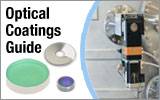
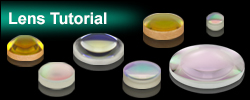
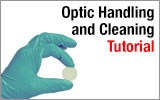
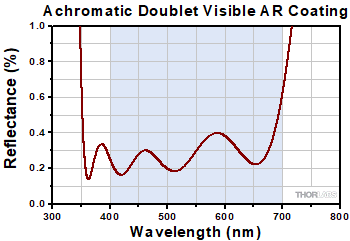
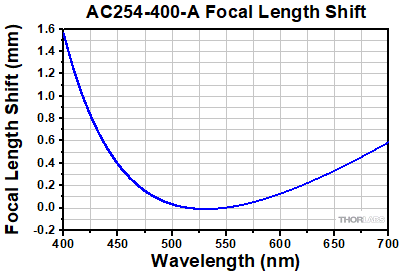
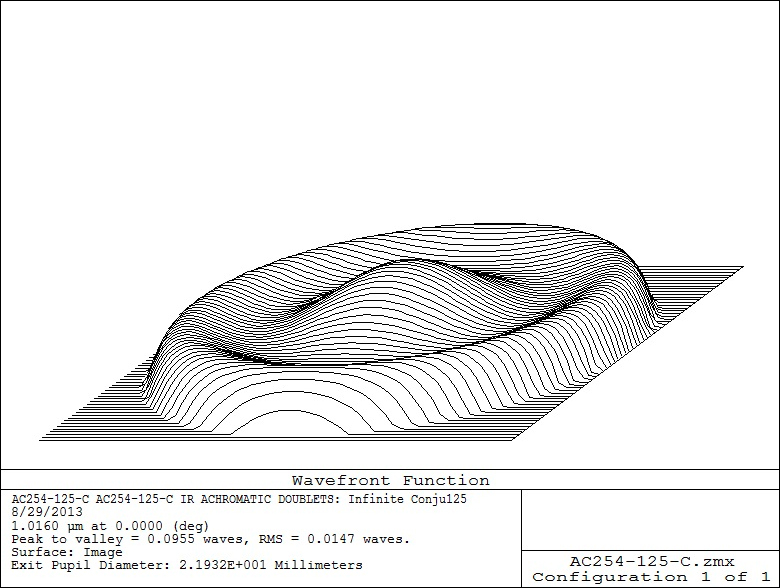
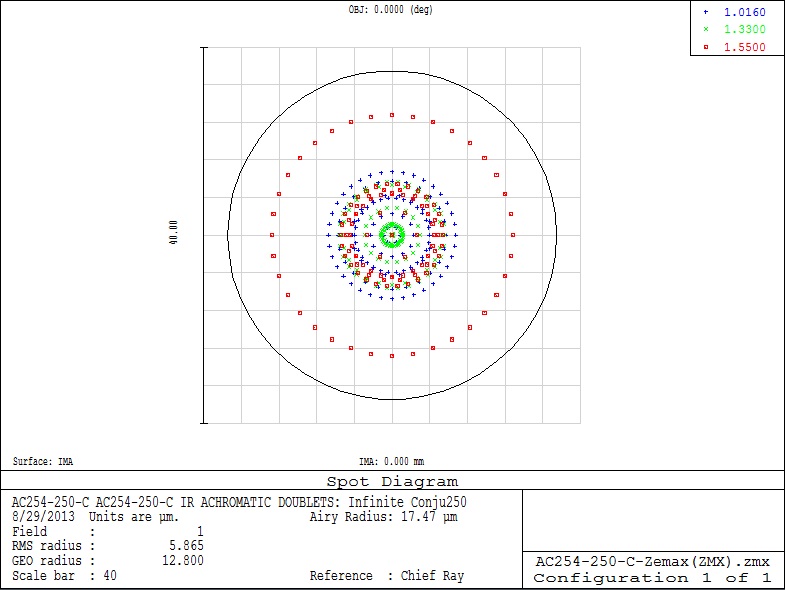
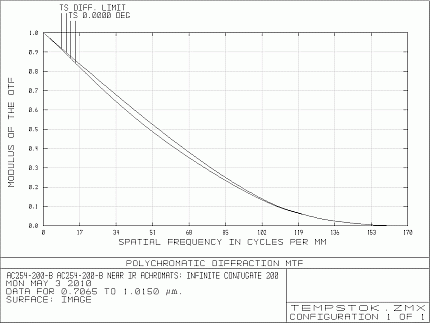

 400~700 nm、マウント無し
400~700 nm、マウント無し